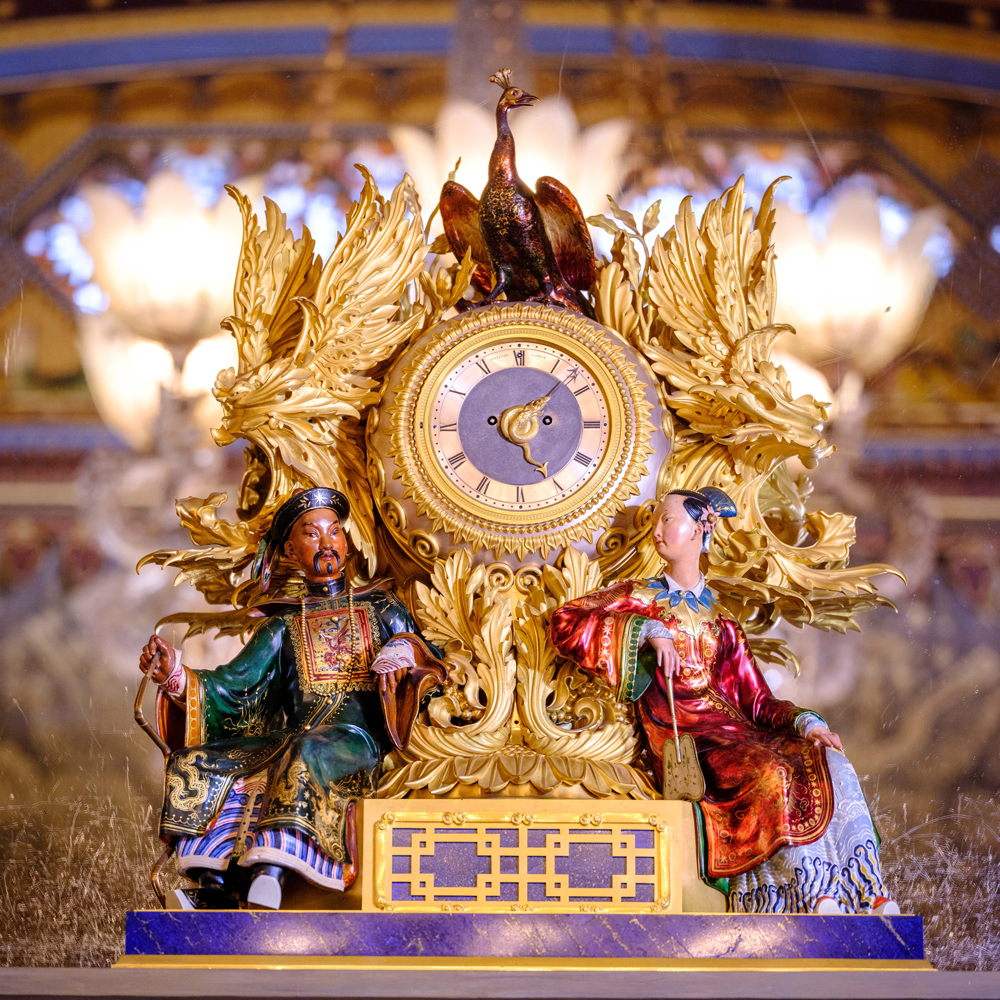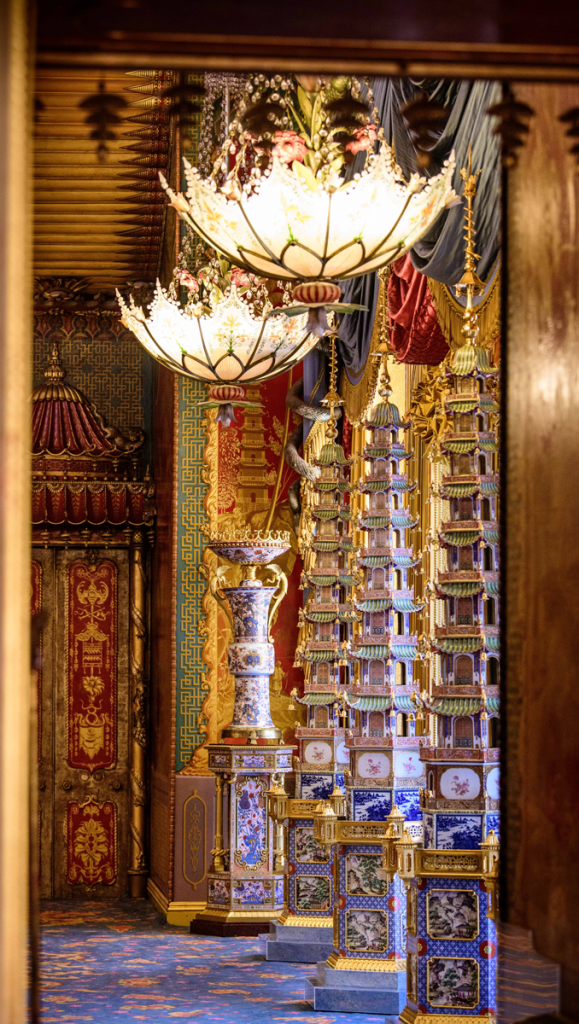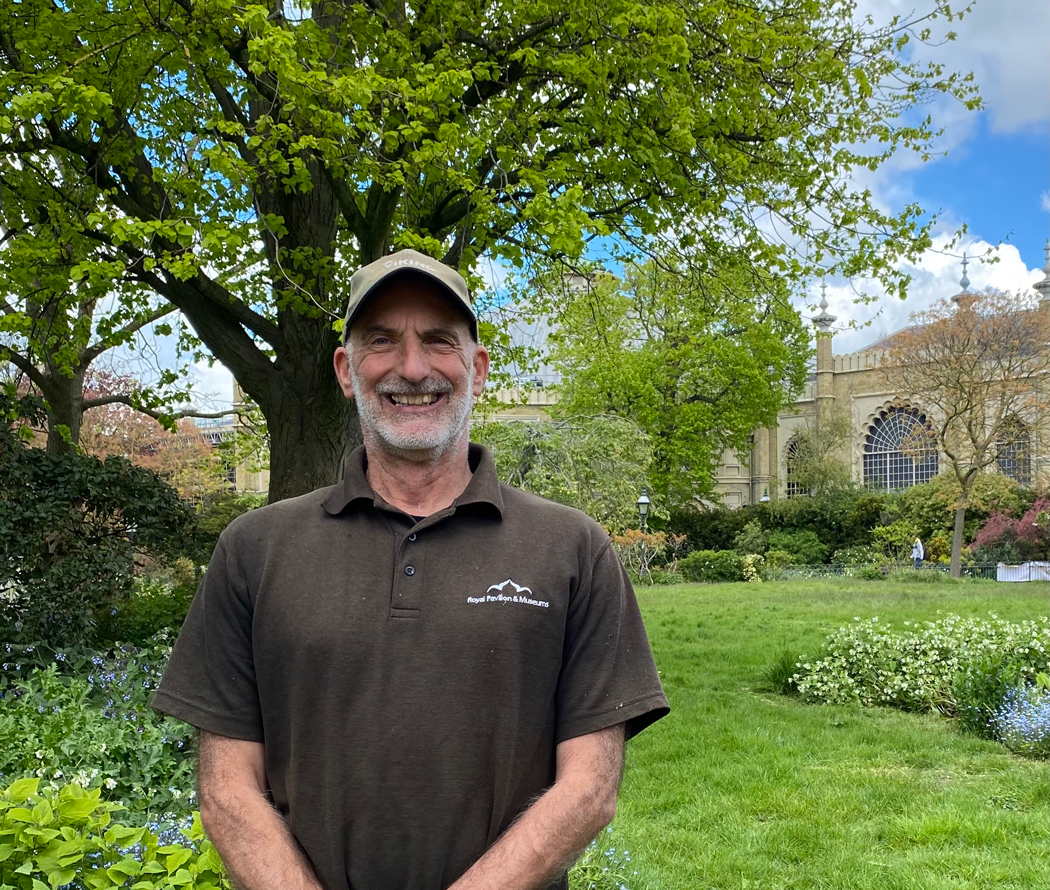
This week I am on staycation here in Sussex and I am once again returning to The Royal Pavilion, Brighton to experience ‘A Prince’s Treasure’, this year’s must see exhibition. I cannot impress upon you quite how marvellous this exhibition is.
I meet David Beevers, Keeper of the Royal Pavilion, who has overseen this remarkable collaboration between the Royal Collection Trust and the Royal Pavilion.
I comment on how hard it must have been for David and his team to have had to close and reopen this magnificent exhibition on a number of occasions due to the challenges of Covid-19. He replies by saying how blessed they have been that most of the loans were received before the pandemic broke.
The exhibition showcases a spectacular loan of some 120 decorative works of art from Her Majesty The Queen; pieces that were originally commissioned by the Prince Regent for the Royal Pavilion. It provides a once in a lifetime opportunity for visitors to see these objects of unparalleled magnificence in their original setting. The Pavilion’s exotic, regal interiors come alive in the company of the pieces commissioned for them and further our understanding of the future George IV’s influence and tastes.
David is excited to show me the array of loans some of which have recently arrived.

The Music Room’s magnificent decoration works in concert with the objects which have fleetingly returned to their original setting.
Your senses are overwhelmed by the spectacle of the line of enormous porcelain pagodas which make sense of and give voice to the scale of this room.
These imposing porcelain objects were acquired in 1803/1804 from China and the dealer Robert Fogg. Fogg supplied the English Spode porcelain bases as well as the gilded bronze bells, dolphins and dogs, and the dragon finials which were subcontracted to B.L. Vulliamy.
I ask David which object most sums up the Royal Pavilion and the exhibition and he takes me to the Banqueting Room. We stand in front of a magnificent mantel clock. He says “The clock’s supercharged chinoiserie reflects the Pavilion style at its confident best. It is as though the painted panels [in the room] have taken three dimensional form.” He describes how the clock was designed by Robert Jones and made by Vuillamy. The Chinese figures echo those painted on the walls. The gilt-bronze foliage was gilded by Fricker and Henderson and seems to allude to an eagle in flight.
David Beevers explains that George IV was the greatest British Royal collector and builder. For some 40 years David’s career at the Royal Pavilion has marked a number of remarkable achievements including the restoration of The Saloon so I am humbled when he concludes “Having these loans here is a highlight of my career.”
Whether you are visiting or on staycation in Sussex like me ‘A Prince’s Treasure’ must be on your list of holiday treats. To find out more and to book your tickets visit www.brightonmuseums.org.uk/royalpavilion.

